DYEING WOOL

Lots of different dyes in the pot......
|
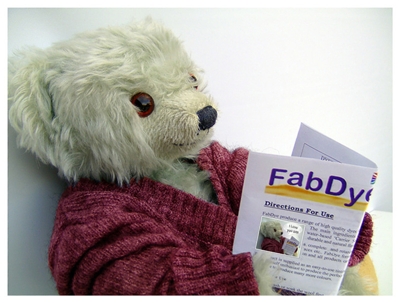
.....but I fancy red!
|
Follow these easy steps for dyeing wool......
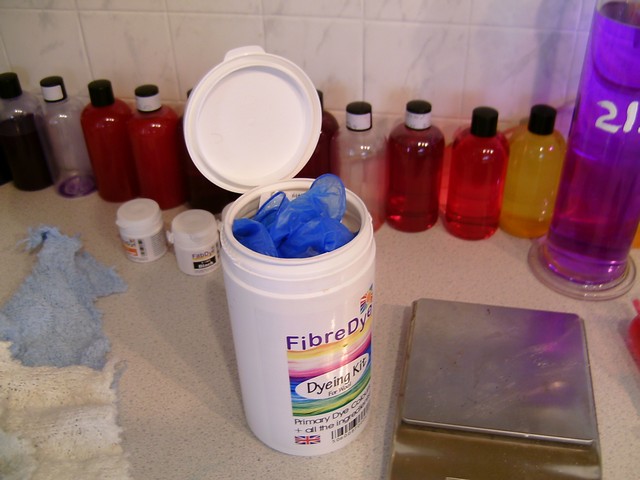
Open the Kit
|
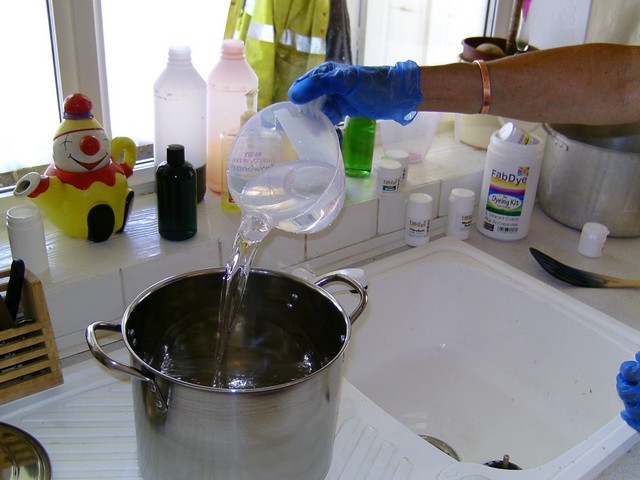 Add water |

Pan on stove
|
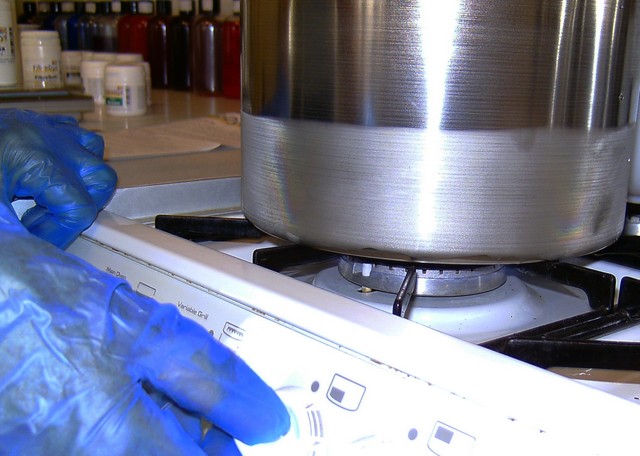
Light the gas
|

Measure Citric Acid Ganules
|

Add Citric Acid
|

Stir and bring up to about 50 C
|
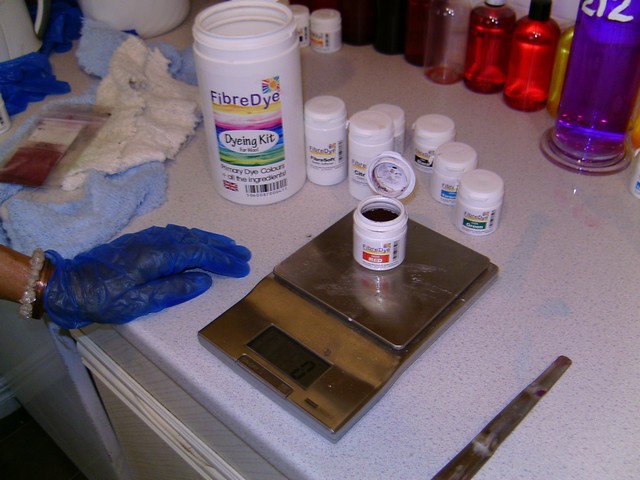
Weigh Dye (up to 4% of dry wt. of wool)
|

Add Dye and Stir
|

Get your pre-soaked wool
|
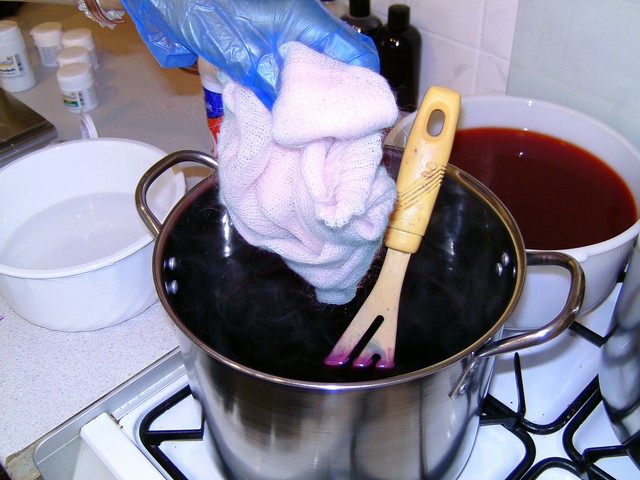
Add to the dye bath
|

Stir again and bring up to simmer
|
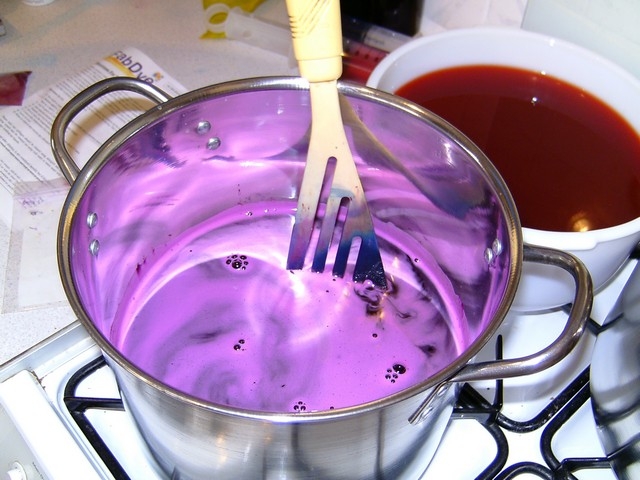
Simmer for at least 45 minutes
|
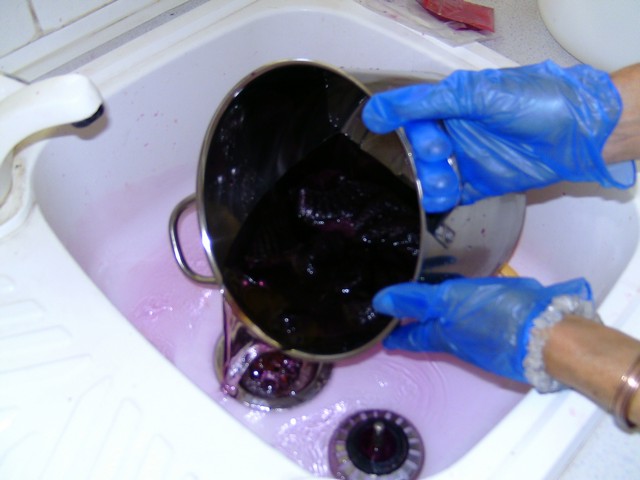
Leave to cool, then rinse with cold water
|
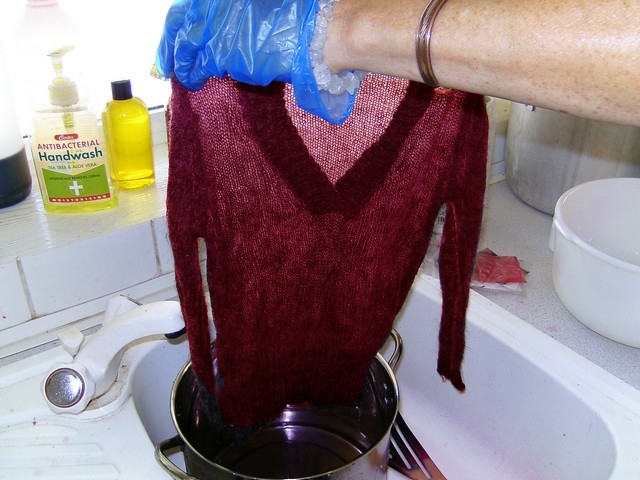
A Fab Dye Job!
|
White vinegar can be used if you have no Citrifix (citric acid). However, vinegar does smell a bit!

DYEING A WOOLLEN JACKET
 |
 |
 |
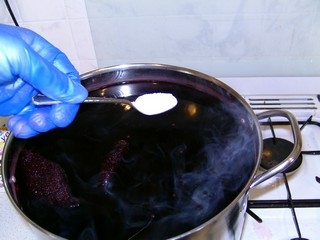 |
 |
 |
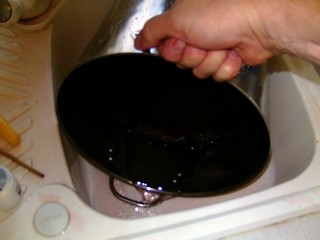 |
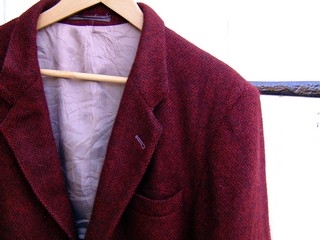 |
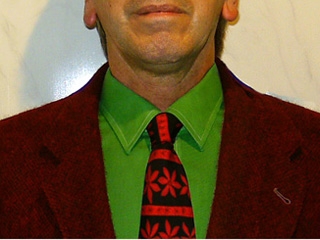 |
How to Acid Dye Wool and Other Animal Fibres
Dyeing wool and other animal fibres at home is easy using acid dyes. While the term 'acid dyes' may sound off putting, it simply means that the water and dye solution needs to be slightly acidic in order to fix the dye permanently to the fibre. New generation acid dyes, such as those from FabDye, work in an extremely mild acid solution and this means that just a small amount of normal household vinegar or citric acid is required.
Types of Fibre to Dye with Acid Dyes
Acid dyes will permanently colour animal fibres. These are also known as protein fibres and includes wool from sheep, as well as a wide range of other fibres such as angora, silk, cashmere and mohair. Acid dyes are perfect for dyeing 'eco'-fibres' such as soy silk or milk protein yarns. Acid dyes will not work with cotton.
How to Dye Using Acid Dyes
The dyeing process is extremely simple and requires little in the way of special equipment. While acid dyes are generally considered safe to use and are not toxic, it is recommended that equipment used for dyeing is not used for food preparation or cooking.
Equipment required for acid dyeing at home includes:
- Scales – a pair of accurate scales is required for weighing the yarn or fibres and the dye.
- Large stainless steel saucepan – this needs to be big enough so that the dye solution can move around the fibres. This will ensure that the colour is spread evenly.
- Stainless steel spoon - a large spoon is required for stirring and moving the fibre around the pot and for taking the fibre out. A wooden spoon would also work well.
- Measuring jug – for measuring the water to make the dye solution.
- Plus a few other supplies such as clean glass jars and teaspoons.
Citrifix
While vinegar is widely used with acid dyes, Citrifix from FabDyes is a great alternative. Vinegar can leave a distinctive aroma when it is used to dye wool and yarns. Although this washes out, it can linger in some yarns. Citrifix also will not discolour the dye solution. Unless you use a pure white vinegar, the colour of the vinegar can slightly alter the end colour of the dyed yarns. This isn't a problem with deeper colours, however it can be very apparent on pastel shades.
Dyeing Wool or Yarn with Acid Dyes
Any undyed wool or yarn that has been spun from protein fibres is suitable for dyeing with acid dyes. The wool will need to be thoroughly soaked before it is dyed. This helps to ensure that the dye solution is evenly dispersed throughout the fibres. Soaking the wool overnight and gently squeezing to remove any air bubbles will ensure that it is thoroughly wet.
The dyeing process is the same for both unspun wool or fibre such as rovings or tops as well as for spun yarn. The fibres need to be clean and free from grease and dirt before dyeing. Balls or cones of yarn should be wound into skeins before dyeing. This should then be loosely tied in three or four places to stop the yarn from getting tangled. It is important that this is done loosely otherwise the dye will not take near the ties (this could, however, produce an interesting 'tie-dye' effect).
Dyeing Tips
To dye the yarn or fibres, simply follow the instructions in your FabDye kit. Here are some tips to help you achieve excellent results every time:
- Measure the dye and the yarn or fibres accurately. It is easy to scale the dye solution up or down depending on the amount of fibre to dye.
- It is important to make sure that the dye solution can move freely around the dye pot. Gently stir the wool or fibre while dyeing, however do not overly agitate the fibres. Wool and other animal fibres felt easily. This is particularly important with rovings or tops.
- The yarn or fibres will absorb all of the dye and therefore the dye water will be almost clear when the dye process has finished. If there is still a deep color in the dye solution it means that there is still dye waiting to be absorbed. Add some more Citrifix or vinegar and return the dye pan back to the hob.
- Let the yarn or fibre cool slowly to help reduce the opportunity for the fibres to felt.
- Dyed yarns and fibres can be placed in a spin dryer to remove excess water and then hung out to dry. Never put wool or animal fibres in the tumble dryer as this will result in the fibres felting.
- Home Page
- Colour Swatches
- Directions for Use: WOOL
- Directions for Use: COTTON
- GO TO SHOP
- Links
- Contact
There is nothing to it!
You do not need a Degree in Nihilosophy from
The Reginal Denke Foundation and Academy of Learning!